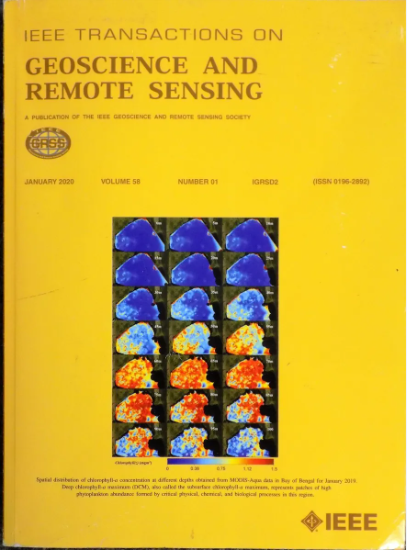Target-Focused Enhancement Network for Distant Infrared Dim and Small Target Detection
IF 7.5
1区 地球科学
Q1 ENGINEERING, ELECTRICAL & ELECTRONIC
IEEE Transactions on Geoscience and Remote Sensing
Pub Date : 2024-09-27
DOI:10.1109/TGRS.2024.3459652
引用次数: 0
Abstract
In the context of long-range infrared detection of small targets, complex battlefield environments with strong background effects, adverse weather conditions, and intense light interference pose significant challenges. These factors contribute to a low signal-to-noise ratio and limited target information in infrared imagery. To address these challenges, a feature enhancement network called target-focused enhancement network (TENet) is proposed with two key innovations: the dense long-distance constraint (DLDC) module and the autoaugmented copy-paste bounding-box (ACB) strategy. The DLDC module incorporates a self-attention mechanism to provide the model with a global understanding of the relationship between small targets and the backgrounds. By integrating a multiscale structure and using dense connections, this module effectively transfers global information to the deep layers, thus enhancing the semantic features. On the other hand, the ACB strategy focuses on data enhancement, particularly increasing the target representation. This approach addresses the challenge of distributional bias between small targets and background using context information for target segmentation, mapping augment strategies to 2-D space, and using an adaptive paste method to fuse the target with the background. The DLDC module and the ACB strategy complement each other in terms of features and data, leading to a significant improvement in model performance. Experiments on infrared datasets with complex backgrounds demonstrate that the proposed network achieves superior performance in detecting dim and small targets.用于远距离红外暗小目标探测的目标聚焦增强网络
在对小型目标进行远距离红外探测时,复杂的战场环境、强烈的背景效应、恶劣的天气条件和强烈的光线干扰都是巨大的挑战。这些因素导致红外图像信噪比低,目标信息有限。为了应对这些挑战,我们提出了一种名为目标聚焦增强网络(TENet)的特征增强网络,该网络有两大创新:密集长距离约束(DLDC)模块和自动增强复制粘贴边界框(ACB)策略。密集长距离约束(DLDC)模块结合了自我关注机制,使模型能够全面了解小目标与背景之间的关系。通过整合多尺度结构和使用密集连接,该模块能有效地将全局信息传递到深层,从而增强语义特征。另一方面,ACB 策略侧重于数据增强,尤其是增加目标的代表性。这种方法利用上下文信息进行目标分割,将增强策略映射到二维空间,并使用自适应粘贴方法将目标与背景融合,从而解决了小目标与背景之间的分布偏差难题。DLDC 模块和 ACB 策略在特征和数据方面相互补充,显著提高了模型性能。在具有复杂背景的红外数据集上进行的实验表明,所提出的网络在检测昏暗和小型目标方面具有卓越的性能。
本文章由计算机程序翻译,如有差异,请以英文原文为准。
求助全文
约1分钟内获得全文
求助全文
来源期刊

IEEE Transactions on Geoscience and Remote Sensing
工程技术-地球化学与地球物理
CiteScore
11.50
自引率
28.00%
发文量
1912
审稿时长
4.0 months
期刊介绍:
IEEE Transactions on Geoscience and Remote Sensing (TGRS) is a monthly publication that focuses on the theory, concepts, and techniques of science and engineering as applied to sensing the land, oceans, atmosphere, and space; and the processing, interpretation, and dissemination of this information.
 求助内容:
求助内容: 应助结果提醒方式:
应助结果提醒方式:


